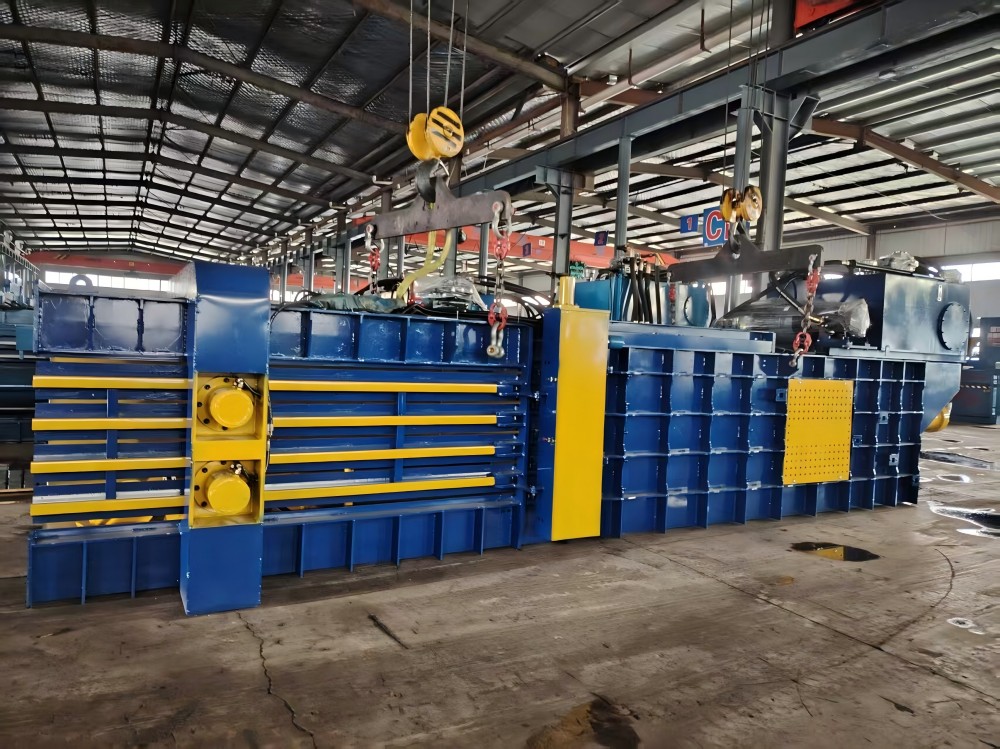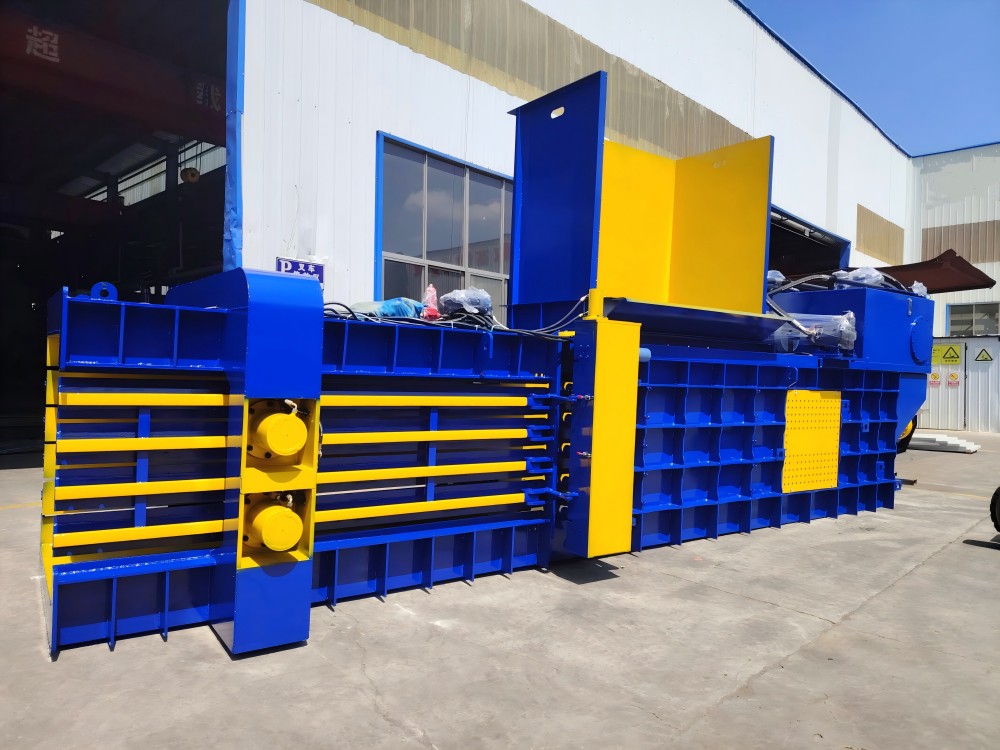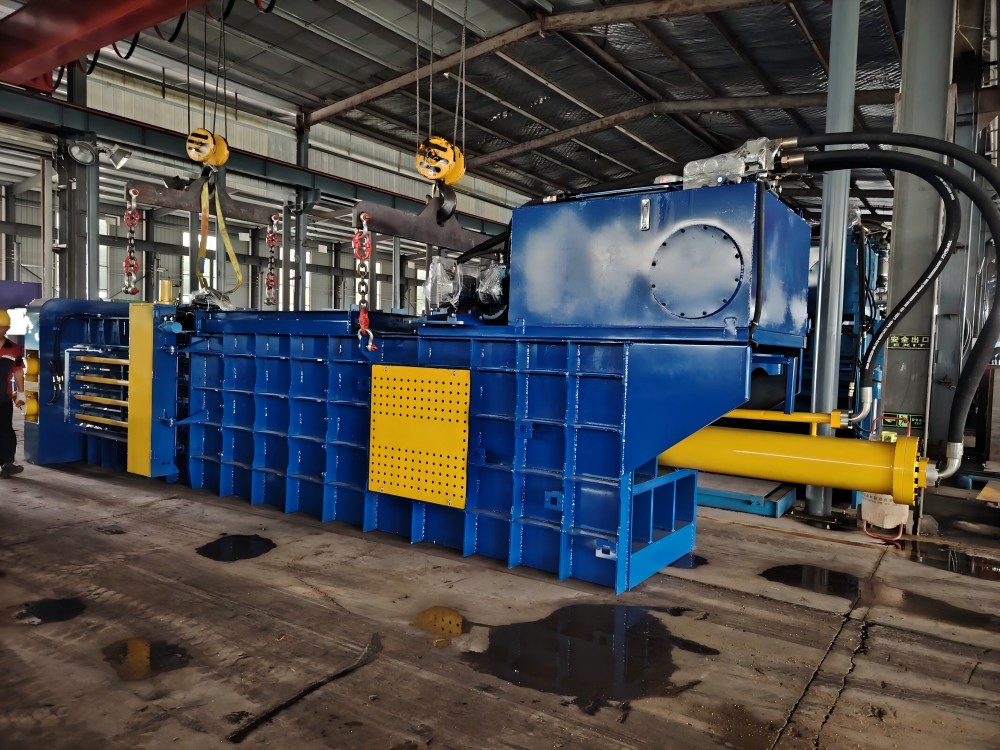Introduction
A horizontal baler machine is an essential piece of recycling and waste management equipment used across industries worldwide. Designed to compress bulky materials such as cardboard, waste paper, plastics, and other recyclable materials into compact bales, this machine plays a crucial role in reducing waste volume, optimizing storage, and lowering transportation costs.
In this blog, we will cover what a horizontal baler machine is, why it is important, the benefits it offers, how it works, and where it is most commonly used. Whether you run a recycling facility, packaging plant, or a large warehouse, this guide will help you understand how horizontal balers can transform your waste handling operations.
What Is A Horizontal Baler Machine?

A horizontal baler machine is a hydraulic waste compaction device designed to compress recyclable materials into dense, easy-to-transport bales. Unlike vertical balers, which press materials from top to bottom, horizontal balers compress waste from the sides. This design makes them better suited for handling larger volumes of waste continuously.
Horizontal balers are equipped with automatic feeding systems, conveyors, and fully automatic binding units, depending on the model. They can process a wide variety of materials such as:
-
Waste paper
-
Cardboard cartons
-
magazines
-
Plastic film and packaging
-
PET bottles
-
Straw and other agricultural residues
Why Choose A Horizontal Baler Machine?
Higher Efficiency
Horizontal balers are designed for high-capacity waste handling. With conveyor-fed input and automatic operation, they save time and reduce manual labor, making them ideal for businesses dealing with large amounts of recyclables.
Space Optimization
The baler compresses waste into compact bales that occupy far less space compared to loose materials. This makes storage more efficient and helps maintain a cleaner, more organized facility.
Cost Reduction
By reducing the volume of waste, transportation becomes more efficient. Fewer trips are required to move the same amount of material, which lowers logistics and fuel costs significantly.
Increased Recycling Value
Compact and uniform bales are easier to transport, handle, and resell. Recycling companies prefer buying baled materials because they are cleaner, standardized, and require less additional processing.
Key Features Of Horizontal Balers
Automatic Feeding
Most horizontal balers are equipped with a conveyor system that automatically feeds waste material into the compression chamber, allowing continuous operation.
Strong Hydraulic System
The hydraulic cylinders provide compression force, ensuring even tough materials like thick cardboard are efficiently compacted.
Adjustable Bale Size
Depending on requirements, operators can adjust the size and density of the bales. This flexibility makes the machine suitable for different industries.
Automatic Binding
Advanced models include an automatic binding system that ties the bales with wire or plastic straps, further reducing manual intervention.
Safety Systems
Equipped with emergency stop buttons, overload protection, and door interlocks, horizontal balers ensure safe operation even in heavy-duty environments.
How To Use A Horizontal Baler Machine

-
Loading Materials
Waste materials are loaded onto the conveyor belt or directly into the feeding system. -
Compression Process
The hydraulic press pushes the waste horizontally into the compression chamber, compacting it tightly. -
Bale Formation
When the chamber reaches its full capacity, the material is compressed into a tightly packed bale. -
Automatic Binding
The machine automatically ties the bale using steel wires or straps to maintain its compact shape. -
Bale Ejection
Finally, the bale is pushed out of the chamber and can be easily stored, transported, or sold for recycling.
Types Of Horizontal Baler Machines
Semi-Automatic Horizontal Baler
-
Requires manual tying of bales.
-
Lower cost, suitable for medium-scale operations.
-
Ideal for businesses generating a moderate volume of waste.
Fully Automatic Horizontal Baler
-
Automatic feeding, compression, tying, and bale ejection.
-
Best for large-scale recycling facilities and paper mills.
-
Saves significant labor and time costs.
Industries That Benefit From Horizontal Balers
Recycling Centers
Horizontal balers are at the heart of recycling centers, helping to efficiently handle large volumes of recyclable waste.
Paper And Packaging Plants
Balers play a vital role in the packaging and printing industries by recycling the substantial amounts of cardboard and paper waste they generate.
Logistics And Warehousing
Warehouses often deal with waste cardboard boxes from incoming shipments. A horizontal baler provides an efficient solution to manage this waste.
Retail And Supermarkets
Large retail stores generate vast amounts of packaging waste. A baler allows them to compress and recycle efficiently.
Agriculture
Farmers can use horizontal balers to compress straw, hay, or crop residues for easier storage and transportation.
Benefits Of Using Horizontal Baler Machines
-
Saves Labor: Automation reduces manual work.
-
Environmental Impact: Encourages recycling and reduces landfill use.
-
Higher Productivity: Handles waste continuously without interruptions.
-
Better Workplace Management: Reduces clutter and improves cleanliness.
-
Long-Term Savings: Investment in a baler pays off through lower logistics costs and higher recycling returns.
Example Of Using A Horizontal Baler Machine
A supermarket chain generates significant amounts of packaging waste each day, mainly from cardboard boxes and plastic wrapping in incoming shipments. Without effective handling, this waste quickly occupies valuable storage space and increases disposal costs.
By installing a fully automatic horizontal baler machine, the supermarket was able to streamline its waste management process. Employees place the empty cardboard boxes and plastic film directly onto the conveyor belt, and the baler automatically feeds, compresses, and ties the waste into uniform bales.
Each bale weighs around 500–600 kg, making them easy to store and transport. Instead of paying high fees for waste disposal, the supermarket now sells the compact bales directly to recycling companies. This not only reduces operating costs but also creates an additional source of income.
The result: cleaner storage areas, reduced labor costs, and a significant contribution to environmental sustainability.
Conclusion
A horizontal baler machine is more than just a recycling tool—it is an investment in efficiency, cost reduction, and sustainability. From recycling facilities and paper mills to supermarkets and warehouses, any business dealing with large volumes of waste materials can benefit from this machine.
By choosing the right type of horizontal baler, whether semi-automatic or fully automatic, you can significantly improve your waste management process, save costs, and contribute to a greener environment.
If you are looking for a reliable solution to manage your recyclable waste, a horizontal baler machine is an excellent choice that combines durability, efficiency, and long-term value.
For more details about horizontal baler machines, or if you would like a customized solution for your recycling needs, feel free to get in touch with us. Our team is always ready to provide professional advice, detailed specifications, and the most suitable baler solution for your business. We look forward to hearing from you and working together to build a more efficient and sustainable future.

